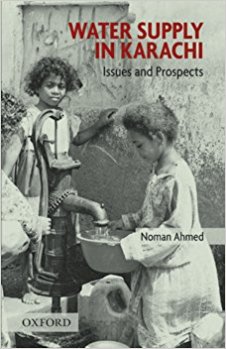Let me begin this review by borrowing the first sentence of Noman Ahmed’s book which reads: ‘Water supply issues, particularly drinking water supply, are acquiring frontline importance due to the gravity of the prevailing situation’; my assessment and review of the related studies suggest that water supply issues are already on the frontburner in much of the developing world and especially in Asia-Pacific where a large proportion of people in urban areas have no access to safe drinking water and which present, as the author suggests, ‘a dismal picture in terms of (the) availability of safe water to its urban residents’. In fact, Noman Ahmed is well cognizant of the crises when he, using the UNEP’s estimates, points out that in 1995, 29 countries with population totalling 436 million experienced water stress or scarcity; the author is also mindful of the fact that the water crises may worsen in the future, with the crises reaching out to 1.4 billion persons in 48 countries by 2025 ad. and to 3 billion persons by the year 2035 ad!
In this broader context, Noman Ahmed walks us through the very rich and interesting literature on urban water issues, possibly with the objective of informing the readers that irrespective of how urban water is perceived in the different countries—as a basic right, or an economic or tradeable good, or a component of the life-support system, water reaches out to the consumers (rather supplied) via various channels and mechanisms. Literature points out that contrary to what many believe, it is not the formal, piped water that dominates the water supply system; rather, it is a blend of highly innovative channels and mechanisms that are in vogue in the different parts of the world. Further, these channels are not possible to be placed or divided into formal-informal, or public-private; there exists in real life interesting partnerships and working relationships between consumers and suppliers and within supplier groups. Dichotomies such as piped water versus water delivered by vehicle; water from a water company versus from a small scale provider; systems managed by a community versus system run by a private entrepreneur; independent providers possessing direct link with the source are just a few channels that Ahmed provides for illustrating the complexities of water supply system in the developing world. An important message emerges from this literature review: all these channels and mechanisms acquire, I would like to assume in a relatively short span, a kind of a financial viability which permits them to compete and survive within the water market. Alternatively, it could be argued that water market is highly differentiated with several sub-markets which operate at some level of viability, for supplying water to urban consumers.
Using the literature review, the author formulates a research framework and tests out in three situations in Karachi why alternative supply arrangements exist and are resorted to. The author points out that while consumption of water is universal, the vital issue is the relationship of the consumer with the source of supply or the supplier. It forms the core of his research. In his research, Ahmed focuses on ascertaining the (i) status of water supply, (ii) mode of water supply, (iii) adequacy of water supply, (iv) frequency of water supply, (v) existing supply arrangements, (iv) reasons for using alternative arrangements, (vii) factors affecting water supply, and (viii) water charges under different water-supplying arrangements.

